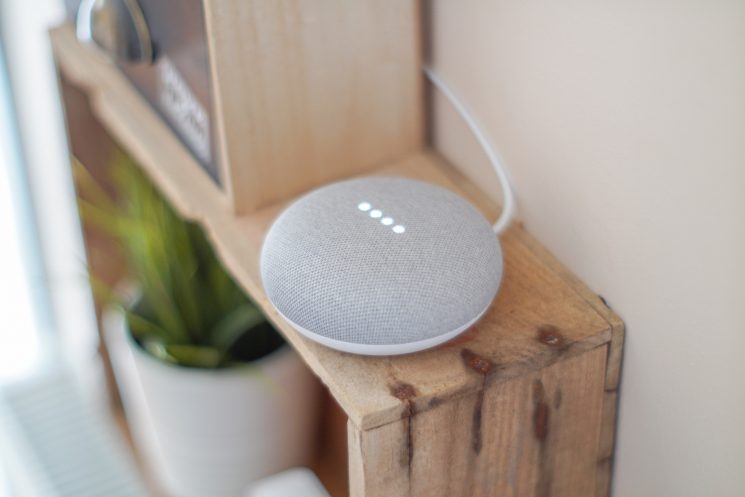When you say smart houses; the older generation would automatically think of the house where the Jetson’s family (a cartoon in the 1980’s) lives – a futuristic house with a robot, and house appliances that talk to each other and do chores automatically like they were on a schedule.
Coldwell Banker International, a well know real estate agency, defines smart houses as homes that are: “equipped with network-connected products (aka “smart products,” connected via Wi-Fi, Bluetooth or similar protocols) for controlling, automating, and optimising functions; such as temperature, lighting, security, safety, or entertainment; either remotely by a phone, tablet, computer, or a separate system within the home itself.”
Types of Smart Houses
Nowadays, there are a lot of smart home solutions that are being offered by different companies depending on the level of automation or smartness that you want it to have. Frankly, the solutions can be a bit confusing to understand, so let’s try to break it down.
Smart Houses That Can Be Controlled Via Devices
A large quantity of our houses are almost manageable via a smart device- your phone or your tablet. There are some smart home solutions that allow you to control it locally while others offer solutions that let you control your home remotely.
There are also other controls like on-wall control, touchscreen, voice control (Think Siri or Amazon Alexa), and universal remote controls.
Smart Houses that Can Be Controlled Thru Programming
There are basic smart home solutions that allow you to set schedules and timers; for example, turning the lights on in the house after 6pm. The more advanced the system that’s installed, the more complicated the programming. Some smart home systems that have level programming; may need a professional to install it. But once it’s installed the basic settings can be made by the owner of the house.
Smart Houses Thru Automation
Automation is a step up from programming. In automation, systems ‘talk’ to each other, and know that one event will trigger a command that will set off another device. Automation requires the system to have high-level programming that works constantly in the background.
To illustrate the difference between automation and programming, let’s take this example: programming is telling the system to turn the lights on at 6pm; While automation is turning the lights on at 6pm, turning on the air-conditioning in the house, turning your favourite music, and sending you a text message welcoming you home.
Smart Houses Thru the Internet of Things ( IoT)
Some smart home solutions are harnessing the power of the Internet so that the devices can ‘talk’ to each other. These devices constantly send and receive information about each other and do more than automation, the devices actually learn from the data that’s constantly being sent back and forth. For example, Smart Fridges like Samsung’s Family Hub that is connected to the Internet gives the user the ability to order groceries online directly from the touchscreen installed on its door. The only downside is that it can be a problem when the internet connection goes down.
With all these options available in the market, how do you know what technology to choose for your home? The best thing is to find out what level of technology you are most comfortable having in your home. After this, you can try to read the reviews online regarding each system, just like AEC professionals reading the online reviews for each software when they are looking for the best software for construction project management.
How Does A Smart Home Really Work?
So by now you have an idea on more or less what a smart home is, and the different kinds of systems that are available in today’s smart houses. But then how does it really work? Let’s try to understand how it really works using very few technical jargons.
So, all the appliances and devices that you will purchase for your smart house all run on what is called a protocol. A protocol is a just technical lingo which means machine language. Currently, devices that run on different protocols can’t communicate with each other.
The easiest way to understand this is to think that devices ‘talk’ in different languages. A machine that ‘talks’ in Chinese doesn’t understand a device that ‘talks’ in Italian. The ‘translator’ is still being worked out at the moment and is not yet available.
Currently, there are three leading protocols that are dominating the smart market: Z-Wave, Zigbee, and Wi-fi.
Zigbee and Z-Wave work through what is called mesh network which needs only minimal power to run. This kind of protocol can work with devices that are on batteries.
Devices that run on Wi-Fi are power intensive. However, devices that run on wi-fi don’t need any additional hardware or devices to communicate with each other.
The Cost of Turning a Regular Home into A Smart Home
How much does it cost to make your house smart? The answer is; it depends on how far you want to go. The truth is that there is no limit to how ‘smart’ you want your home to be. And, it is easy to get carried away due to the huge number of smart devices available in the market.
The best thing to do is to take a minute to figure out what is your goal before you go and purchase these products. Truthfully the price can be as low as £1150 but can go up to untold amounts depending on the make and model of the products that you want to buy.
Whatever devices you choose to buy; take into consideration that at this point the industry still has not figured out how to make devices that run on different protocols; to talk to each other directly. So it might be a good idea to purchase machines that run on the same language to avoid any potential problems. With the rate that smart home technology is going; it won’t be long before it becomes the norm. And with smart homes; you never have to worry if you’ve turned off the gas, the lights or have your keys with you when you run out of the door.





